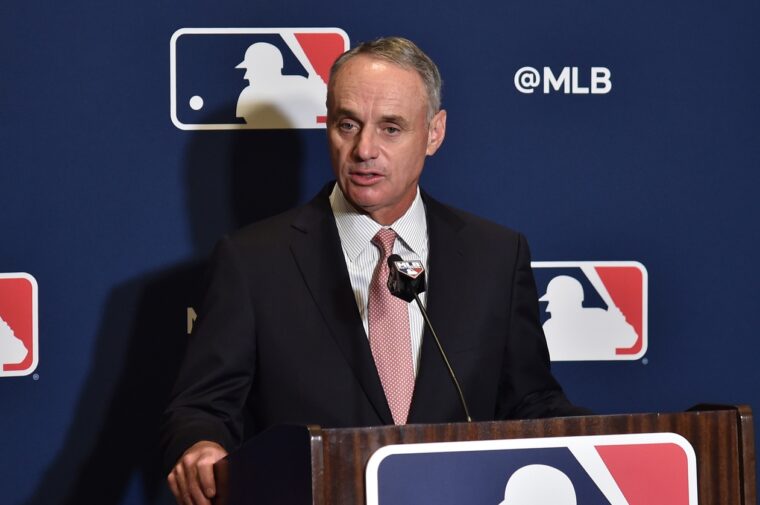
As written here on MMO, initial television ratings for the early rounds of the 2022 postseason were encouraging. While the increase in viewership was modest, the higher ratings also skewed a bit more than recent years toward a younger audience. This is something on which Major League Baseball is focusing, with upcoming rule changes designed to quicken the pace of the games and add more on-field action. The good ratings news did not carry over the World Series, however. What does this mean for the game?
Let’s start with some numbers. The Astros’ victory in six games over the Phillies averaged just over 12 million viewers, including the Fox broadcast, Fox Deportes, and streaming (streaming became factored into the numbers in 2022). On Fox alone, the average was 11.78 million. This is the second- lowest viewer draw in World Series history, trailing only the Dodgers’ 2020 win in six games over the Rays, which averaged only 9.94 million on Fox. Last year’s Braves’ win, also in six games, over the Astros averaged 11.94 million people watching on Fox.
This clearly isn’t the news that MLB was hoping for for its pinnacle event. But just how bad of a message do these television ratings deliver? The answer is a matter of perspective. In an article in The Athletic by Bill Shea, the author provides some interesting context. There is no doubt that in recent years, fewer people are watching the World Series. In 1973, when the Mets faced the Oakland Athletics, over 34 million watched, and that number ballooned to over 44 million in 1978 when the Yankees took on the Dodgers. By 2005, television viewership was consistently below 20 million, in fact, from 2005-2022, only the Cubs-Indians series averaged an audience of over 20 million (Game Seven that year pulled in over 40 million people).
Shea’s perspective is that we have to re-frame our thinking about television viewership. There are so many more options today, that an apples-to-apples comparison to even twenty years ago is essentially invalid (no one was streaming Ted Lasso, or anything else, in 2002). A better metric to use is how a television event does in its time slot against the competition that night (or day). Using this lens, baseball is not doing badly. From former television executive Patrick Crakes, in Shea’s article:
“Show me something that’s setting an all-time (viewership) record somewhere,” said Patrick Crakes, a media analyst and former Fox Sports executive. “This is the range it’s at. The World Series was a top-10 prime-time show 50 years ago alongside ‘Mannix’ and it still is today. What else does that? The NFL and a couple other things.”
The NFL is, as one may expect, an outlier. Super Bowl viewership goes up virtually every year. Last year’s Rams-Bengals Super Bowl had nearly 100 million viewers. The 2015 game between the Seahawks and Patriots drew an audience of nearly 115 million. In 1973, the Super Bowl had over 53 million people watching as the Dolphins took on the Washington Redskins.
So baseball is still winning its time slots, though with smaller numbers. That is what sponsors are willing to pay for, and they are definitely paying. MLB is set to realize $11 billion in revenue this year, according to Forbes. This would represent pre-pandemic (2019) level revenue. From the cited Athletic article:
Fox pays MLB a reported $729 million annually through 2028 for its broadcast rights package that includes the World Series. The championship is a crown-jewel telecast, but such live sports deals are generally more about the day-to-day live game inventory that populates channels and streamers.
Advertisers spent $178 million on commercial airtime with Fox during the World Series, per data provided by advertising metrics data firm EDO Inc. That’s up from last year’s $163 million and 2020’s $162 million (all six-game series).
It’s unlikely that baseball will see average World Series viewership over 30 million again, given the new world, with more streaming and more entertainment options in general. Crakes adds this in Shea’s article:
“Those numbers may be unreachable,” Crakes said, adding that it would take a seven-game series, without interruption, and probably would need to be a major market matchup between, say, the Cubs and Yankees to have any shot.
It’s important to note that the 2022 World Series had two games on Saturday nights (one of which because of a rainout), which not only are generally the worst nights for television, but also the games had to compete with college football in its customary time slot. However, the numbers still would not have been significantly better.
In the end, the dire predictions that “baseball is dying” are not valid. The game’s revenue has rebounded since the pandemic has eased, and a contextual look at television viewership shows that the game remains more popular than virtually any other current programming.
Baseball still has work to do. The game needs to increase its appeal to younger audiences to ensure long-term viability. Commissioner Manfred, though his moves are often derided and the jury is still out on their effectiveness, is making tweaks to try to make the game more enticing to younger people. Time (and revenue trend lines) will tell if he succeeds.
For now at least, the news for MLB is not all bad.















